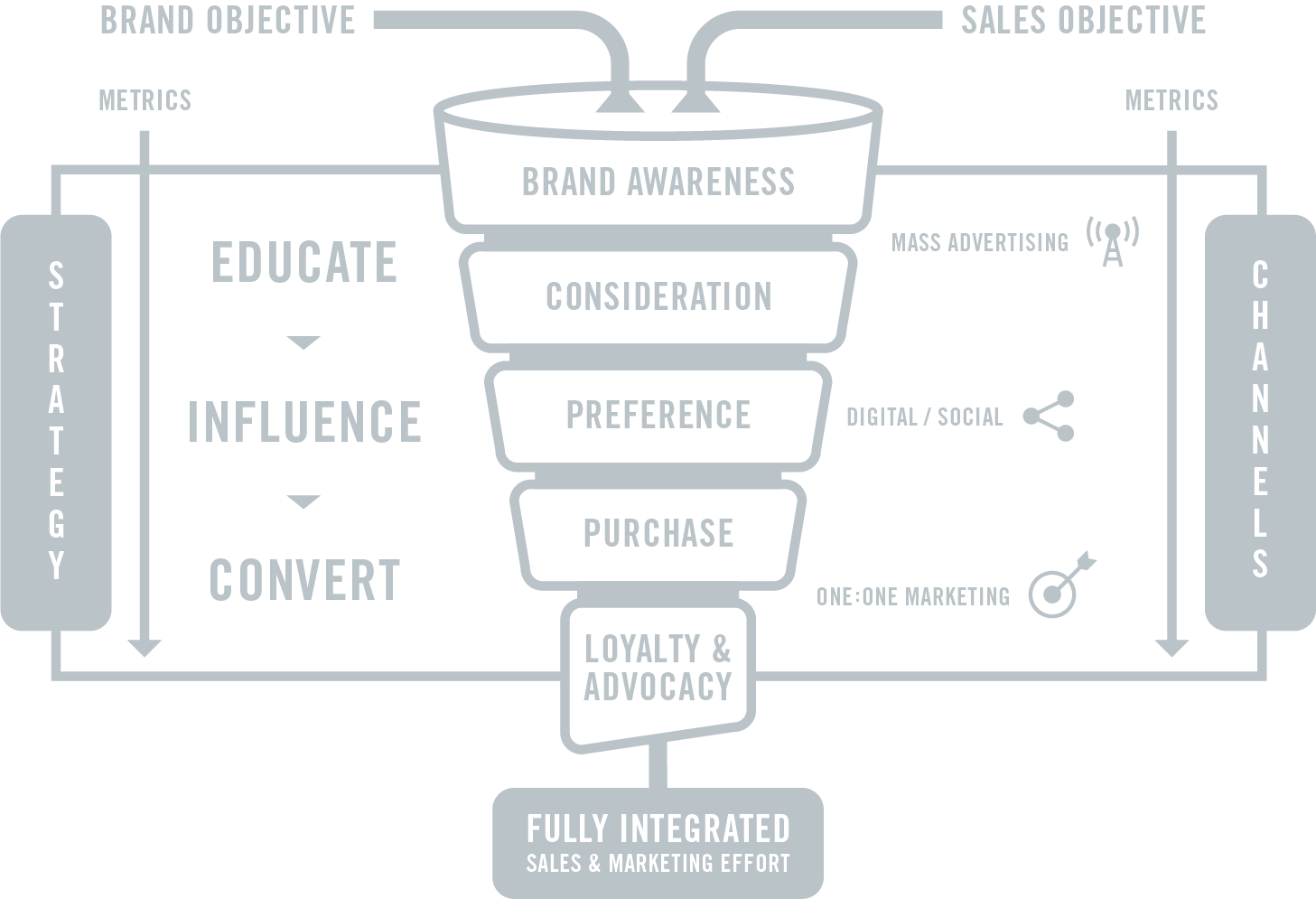In the life of a CMO, addressing consumer “pain points” is among the most thought and talked about of day-to-day responsibilities. CMOs are being challenged to have their finger on the pulse of the customer. But, who’s looking out for the pain points of CMOs themselves? That’s the role that forward-thinking agencies need to assume in the modern age of marketing.
According to a recent article from marketingcharts.com, pain points for CMOs include, among others, disconnected messaging at different points in the sales funnel and increased pressure to prove marketing’s worth via ROI metrics. But for many CMOs, the ad agencies and marketing partners they rely on to help, are not being charged with helping move customers from awareness, to consideration, to purchase. Each respected agency focuses exclusively on messaging for isolated stages of the marketing funnel and can’t actually help CMOs effectively do their job.
When an agency and the campaign they develop, have an enterprise-wide understanding of the business and work closely with the CMO throughout the entire process from consumer interest to customer loyalty, what used to be pain points is now an effective brand experience for the consumer. And in cases where multiple agencies are being used by a client, it’s imperative that the effort for brand awareness, consideration, and purchase campaign are coordinated in terms of consistent brand messaging.
But according to a recent CMO survey conducted by Duke University, effective CMOs can take it a little bit further – and modern agencies can help. With today’s abundance of available data, it’s no longer enough for CMOs and agencies to analyze only the end result. They need to utilize ROI metrics throughout the entirety of the consumer decision process in two major ways. First, ROI metrics give valuable insight into what marketing efforts are and aren’t working, so you can adjust the messaging accordingly. Second, ROI metrics give CMOs a huge leg-up in being able to not just communicate, but quantify just how valuable marketing is to their business, helping to earn more confidence and budget allocation for their department.
Effective agencies don’t just advertise, they partner with CMOs to market their clients’ business and move consumers through the sales funnel. We call it full-funnel marketing, but you can just think of it as a whole lot of pain relief.
